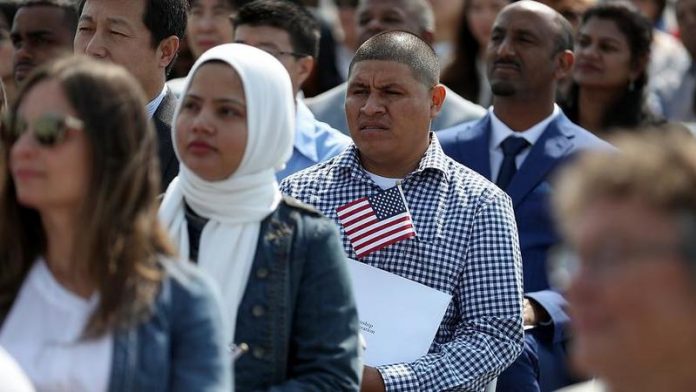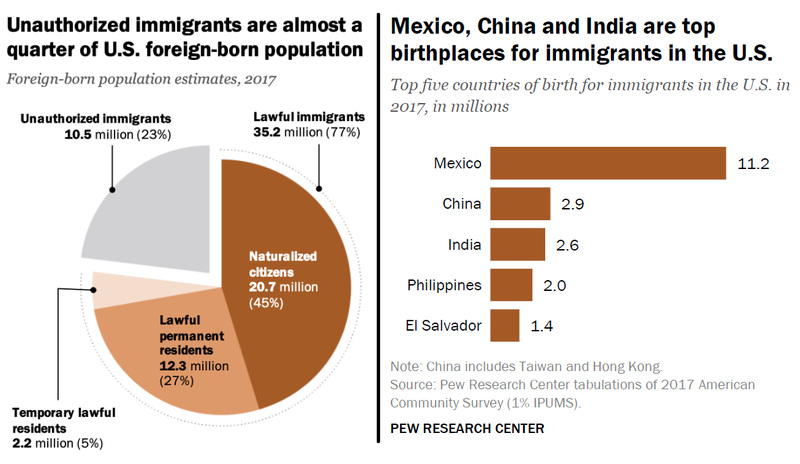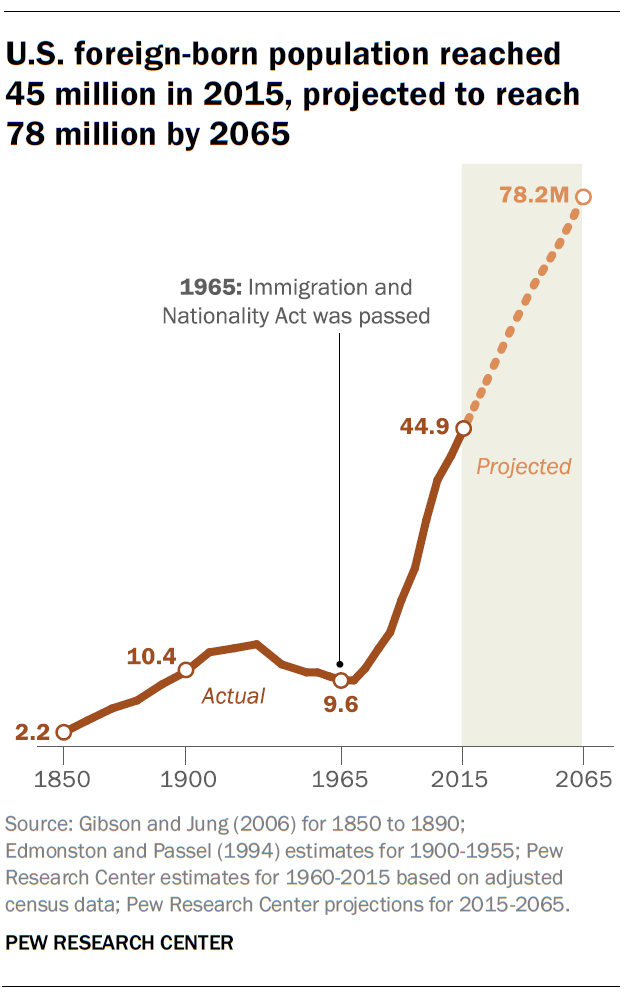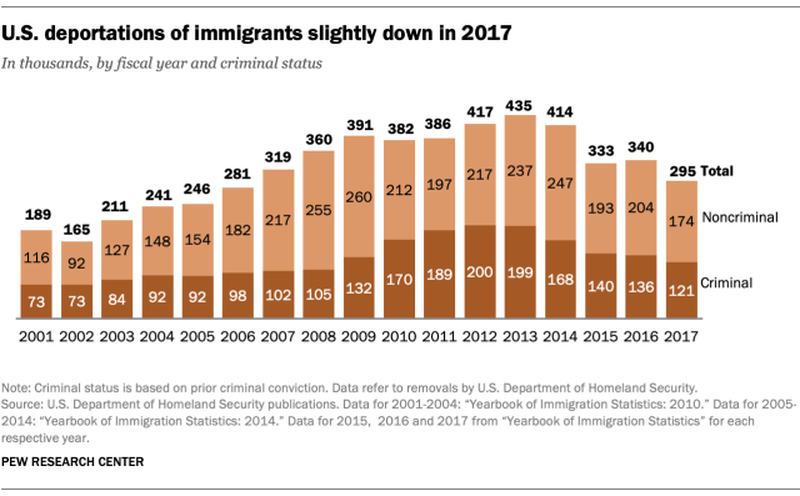
(Zero Hedge) There is no country in the world with more immigrants than the United States, which has over 40 million residents who were born in another country – or around 20% of the world’s migrants in 2017, according to Pew Research Center.
The U.S. foreign-born population reached a record 44.4 million in 2017. Since 1965, when U.S. immigration laws replaced a national quota system, the number of immigrants living in the U.S. has more than quadrupled. Immigrants today account for 13.6% of the U.S. population, nearly triple the share (4.7%) in 1970. However, today’s immigrant share remains below the record 14.8% share in 1890, when 9.2 million immigrants lived in the U.S. –Pew
While most of the immigrants are in the country illegally, approximately 23% are not. Meanwhile, Mexico is the top country of origin for immigrants in the United States overall.
While some 29 million immigrants make up around 17% of the total civilian workforce in the United States, illegal immigrants make up approximately 4.6% of that figure.
Unlawful immigrants make up about 5% of the labor force but this share has been shrinking after the GFC.
The US unemployment is 3.6% pic.twitter.com/1TEHuX0U2m
— THE LONG VIEW ⚫️ (@HayekAndKeynes) July 2, 2019
Who is arriving today?
According to the report, over 1 million immigrants arrive in the US each year, most of whom are Asian.
By race and ethnicity, more Asian immigrants than Hispanic immigrants have arrived in the U.S. in most years since 2010. Immigration from Latin America slowed following the Great Recession, particularly for Mexico, which has seen both decreasing flows into the United States and large flows back to Mexico in recent years. –Pew
Surprisingly, Asian immigration now outnumbers Hispanic immigration pic.twitter.com/KWNeJ7uNNR
— THE LONG VIEW ⚫️ (@HayekAndKeynes) July 2, 2019
By 2055, Asians are projected to be the largest immigrant group living in the United States, and will make up some 38% of all immigrants by 2065, followed by Hispanics (31%), whites (20%) and blacks (9%).
Where do immigrants live?
Nearly half of the country’s immigrant population (45%) live in three states: California (24%), Texas (11%) and New York (10%).
California had the largest immigrant population of any state in 2017, at 10.6 million. Texas and New York had more than 4.5 million immigrants each.
In terms of regions, about two-thirds of immigrants lived in the West (34%) and South (33%). Roughly one-fifth lived in the Northeast (21%) and 11% were in the Midwest.
In 2017, most immigrants lived in just 20 major metropolitan areas, with the largest populations in New York, Los Angeles and Miami. These top 20 metro areas were home to 28.7 million immigrants, or 65% of the nation’s total. Most of the nation’s unauthorized immigrant population lived in these top metro areas as well. –Pew
Education
Immigrants from South and East Asia, the Middle East, Europe, Canada have higher educations than those from South America, the Caribbean, Central America and Mexico. Native-born citizens may want to hit the books as well.
Meanwhile, 62% of Americans surveyed said that immigrants strengthen the country “because of their hard work and talents,” while 28% say immigrants are a burden because they take jobs, housing and health care away from US-born citizens. Among the respondents, 83% of Democrats and Democratic-leaning independents think immigrants strengthen the country, while 38% of their conservative counterparts say the same. 49% of Republicans and Republican-leaning independents say immigrants burden the country.
English speakers?
According to the report, 52% of immigrants older than age 5 are proficient in English. Those from Mexico have the lowest rates of English proficiency (33%), followed by Central Americans (34%) and South Americans (54%). Europeans and Canadians are the most proficient in English at 77%, followed by sub-Saharan Africans (73%) and Middle Eastern immigrants (61%).
Interestingly, more immigrants were deported in Obama’s first year in office than Trump’s.
Source: https://www.zerohedge.com/news/2019-07-03/where-are-most-immigrants-united-states









